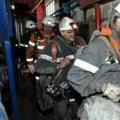What is the thickness of the load-bearing wall? What determines the minimum thickness of a brick wall?
If the question arises of what to prefer - insulation with various insulation materials or reducing the thermal conductivity of a brick wall by increasing its thickness, then you will have to proceed from your financial capabilities. Since if we are talking about areas where the temperature in winter drops to -30˚C, insulating walls whose thickness does not exceed one brick may require an additional layer of insulation, which, in turn, will entail an increase in financial costs for building a house . On the other hand, the thickness of a wall that does not require additional insulation in such climatic conditions should be at least 640 mm, that is, it should be built with two and a half bricks. And this, in addition to increasing the consumption of bricks, will lead to an increase in the weight of the walls, which, even without taking into account other structures, will be so impressive that there will be a need to build a more massive foundation. And this will again lead to a sharp increase in the price of the object.
Other benefits of wall smoothing include the ability to apply internal patches as thin film only. Likewise, external thermal insulation is applied to a very flat and precise surface, resulting in clear savings in material for adhesives and plaster mortars, reduced labor costs and associated logistics and material handling costs.
Some conservative builders with brick masonry prevent oblivion from walls that are too narrow and their low thermal insulation capacity. Lime grinding elements achieve excellent properties even with low wall thicknesses. In this case, classic plaster is not needed, which leads to a large amount of material consumption and labor. However, it is important to choose a sufficient insulation thickness, also due to the constant rise in energy prices.
You should also keep in mind that a house with brick walls requires constant heating in the winter. If a building with thick (two bricks or more) walls is allowed to cool, it may take up to several weeks to heat it up, and with a low power heating system, sometimes it is not possible to restore the normal temperature inside such a house until spring.
When choosing a suitable partition material, we mainly focus on aspects such as material durability, indoor comfort, decorative considerations or fire resistance. We suggest what to look for when choosing building materials for partitions.
The material from which the partitions will be made is most often identified in a home project. However, before you finally decide to read the available building materials catalog, we often forget that what we choose will affect the comfort of our lives.
Today we will look at whether bricks, hollow blocks or blocks might be the right material for us. Bricks are a traditional part of partitions. Brick is very labor intensive, labor intensive and labor intensive. If, however, we care about very good acoustic insulation, high fire resistance, durability and resistance to mechanical damage - it is worth rethinking this option. However, keep in mind that a full brick covers the ceiling. It must be placed on the designed ceiling reinforcement or on an additional reinforced concrete beam based on the supporting walls.
Therefore, if you plan to insulate the walls of a house being built with additional insulation, then the wall thickness is calculated based on the number of floors of the future building, the material of the floors and roof, as well as additional loads, such as snow accumulating on the roof.
Minimum costs - maximum efficiency
Usually thickness brick walls when constructing a one-story building, it is equal to 250 mm, that is, the width of a standard brick. If the height of the house is two floors or more, then the minimum allowable thickness will be one and a half bricks (380 mm). The thickness of internal load-bearing walls should not be less than 120 mm (half a brick), and internal partitions, to save material, can be equal to a brick “on the edge,” that is, 65 mm.
Therefore, it is preferable to make hollow bricks or hollow brick walls. Walls made of ceramic materials require plaster. Both bricks and ceramic hollow bricks must be placed on cement-lime mortar. If you are interested in a quick finishing job, the walls can be lined with plasterboard. Therefore, the main disadvantage of the above solution is the high workload and time. It is also necessary to do wet work when lifting walls as it is quite annoying.
The walls can also be placed from sand-lime products. This is mainly about lime and sandstone blocks and moldings. They are larger than bricks and are available in full or hollow form. Their advantage is that they dampen noise well. The acoustic insulation rating of an 8 cm wall is 45 dB, which meets the higher standard for walls separating sanitary areas from living areas. On the other hand, for a thicker wall the acoustic insulation value is 50 dB.
A good option would be to use hollow bricks in construction, whose thermal conductivity is significantly lower than solid bricks. This will allow you to save on insulation for equal or even smaller wall thicknesses.
In addition, there are ways brickwork, which make it possible to reduce the thermal conductivity of walls with less brick consumption. This is the so-called well masonry. With this method, the thickness of the walls increases due to the air cushion left between the bricks, which is subsequently filled with various insulation materials (slag, expanded clay, etc.). This option allows you to simultaneously reduce weight load-bearing structures and thermal conductivity of brick walls.
Due to the fact that the blocks are manufactured to high dimensional accuracy, they can be exposed to brickwork with a thin mortar of adhesive combined with tongue and groove. If they are carefully laid on adhesive mortar, they will have a smooth surface so that they can be treated with a thin layer of stucco plaster - up to 5 mm. It is also sufficient to use gypsum plaster after preliminary assembly, sanding and plastering of the surface. Lime sand walls are imitated like walls made from traditional bricks, without forgetting to combine the elements correctly.
Brick is a durable, reliable building material with excellent load-bearing capacity. A wall, built in construction terminology “in one brick,” flawlessly holds almost any load. Support it on a supporting structure whose capacity is 25 cm, you can use reinforced concrete, wood and concrete floors, build several floors on top.
In subsequent horizontal layers they must be offset by at least 0.4 times the height of the element and at least 40 mm. Such walls also have good acoustic insulation and fire resistance, are durable, vapor permeable, can be placed without plaster, and are resistant to fungi and mold. It is important to be aware of the high weight and fragility of these materials and therefore special care must be taken during transport.
One plate weighs 25 kg, it is combined with other gypsum plaster and tongue and groove. The walls are finished by filling the joints and sanding the surface. This is a relatively unusual solution, mainly due to the high cost of materials. It is characterized by the ability to float, which is beneficial for the indoor climate. Also one of the more expensive solutions are partitions made of glass voids. In addition to suppressing noise, they also provide light. Glass block walls are placed using cement mortar, connecting filler and plastic connectors.
The reason for the thickening of brick walls is only to increase the thermal and insulating qualities of the house, which is associated both with the location of the residential building near airports, noisy highways, factories, and with the climatic specifics of the region.
Quite high thermal conductivity of brick and inertness in terms of maintaining the existing temperature dictates the application different options increasing the insulation of the building. To create a comfortable environment in a wooden house, it is sufficient to construct load-bearing structures with a thickness of 20 cm, and the thickness of the brick walls to form equivalent indicators should be 64 cm. At the same time, heavy brick significantly increases the load on the foundation, and at the same time the construction budget increases. After all, the construction of the foundation often accounts for a third of all construction costs.
The walls are reinforced with special steel rods placed at the joints. This solution is undoubtedly of great value, with decorative glass cavities available in many fancy colors and surface textures. Everyone will find something suitable for their interior.
Masonry contractors and installers rarely have the opportunity to analyze in detail the Eurocodes, that is, the standards addressed to designers, regarding the principles of creating grooves in walls. Running indoor installations often requires the use of grooves in the walls, and sometimes such installations are designed with cavities. It should be understood that the grooves have a depth and width that is significantly less than their length, while the cavities have a significant width and depth and at the same time a short length. Grooves and recesses can be made both during the construction of walls and in the wall, with grooves most often made in finished masonry and recesses as soon as the walls are erected.
Ways to improve heating technology and insulation of brick buildings
Increased thickness of the brick wall, laying load-bearing structures “in two bricks”. The standard dimensions of the elements allow the construction to be made with a thickness of 51 cm, taking into account the thickness of the seam. Construction of brick walls with an internal air cushion. This is the name of the technology of well masonry, consisting of two walls of one brick and an empty space between them. During the construction of walls, it is filled with expanded clay, organic insulation, expanded polystyrene, slag, and lightweight concrete mixtures. Due to the presence of the cavity, the weight of the structure is reduced and insulation is increased.
Construction of a ventilated facade using lumber, siding, special heat-insulating panels, facing bricks, plaster.
Simple insulation of the facade followed by cladding or applying plaster.
Equipping brick walls with insulation from the inside. The insulation layer must be covered with a vapor barrier layer, then interior finishing must be done.
According to the recommendations of Eurocode 6, grooves and recesses in walls can only be made in certain cases, and most grooves and recesses require structural consideration by the structural designer, usually by local reduction of the design cross-section of the wall.
The basic principle adopted in Eurocode 6 is that grooves and depressions do not impair the stability of the wall. Gouges and grooves should also not penetrate lintels or other structural members built into the wall or be made into reinforced masonry unless they have been taken into account by the designer in these areas. Eurocode 6 divides furrows and depressions according to the direction of their course.
Read also: Installation of a concrete floor on the ground
For internal or facade insulation thickness load-bearing wall can be equal to 25 cm, 38-39 cm when laying one and a half bricks, 51 or 48 cm. The discrepancy of 1-2 cm is due to the presence of a centimeter layer of binder material located between the brickwork elements. Load-bearing walls inside the building should not be thinner than the walls of 25 cm.
The standard in paragraph 2 gives requirements that must be met by vertical grooves and depressions, the presence of which does not need to be included in the calculation. The standard identifies vertical grooves and recesses made in finished masonry and vertical grooves and recesses made during the construction of the wall. In the case of the first, depending on the wall thickness, the maximum depth and maximum width of the grooves or grooves are indicated. When making grooves or recesses during wall mounting, the standard specifies a minimum thickness that must remain after the groove or recess and a maximum width.
Thickness of internal partitions
Most often, in order to reduce costs and reduce the load, internal partitions are constructed from special foam concrete blocks. If the owners nevertheless gave preference to brick, then it is worth taking into account its standard dimensions. To build partitions, use a quarter or half of a brick. The thickness can be 12 cm, when laying elements on an edge 6.5 cm. It is advisable to equip thin brick partitions with a length of more than 1.5 m with reinforced wire.
In table The calculations show the dimensions of vertical grooves and depressions. The maximum depth of a groove or cavity in finished masonry is 30 mm, and sometimes a little more when it is made during installation of the object. Walls less than 85 mm in size are not allowed for furrows without calculation. Additional notes are provided in the table notes. The total width of vertical grooves in the wall should not exceed 0.13 times the length of the wall. Standard recommendations for vertical grooves in a finished wall are shown in Fig.
Rice. 1 Vertical grooves made in the finished wall, which do not necessarily need to be taken into account when calculating the structural load. If vertical grooves or depressions are larger than those shown in the table, they must be included in the design calculations. In practice, this means that the installer must not exceed the values given in this table, otherwise the designer will need to make additional calculations.
Screw piles for a frame house: features and...
 Harmful working conditions Documents confirming work in hazardous working conditions
Harmful working conditions Documents confirming work in hazardous working conditions Topic in German “Umwelt” (Environment) Message in German on the topic of nature
Topic in German “Umwelt” (Environment) Message in German on the topic of nature How do you understand the main idea of the excerpt from the poem N
How do you understand the main idea of the excerpt from the poem N